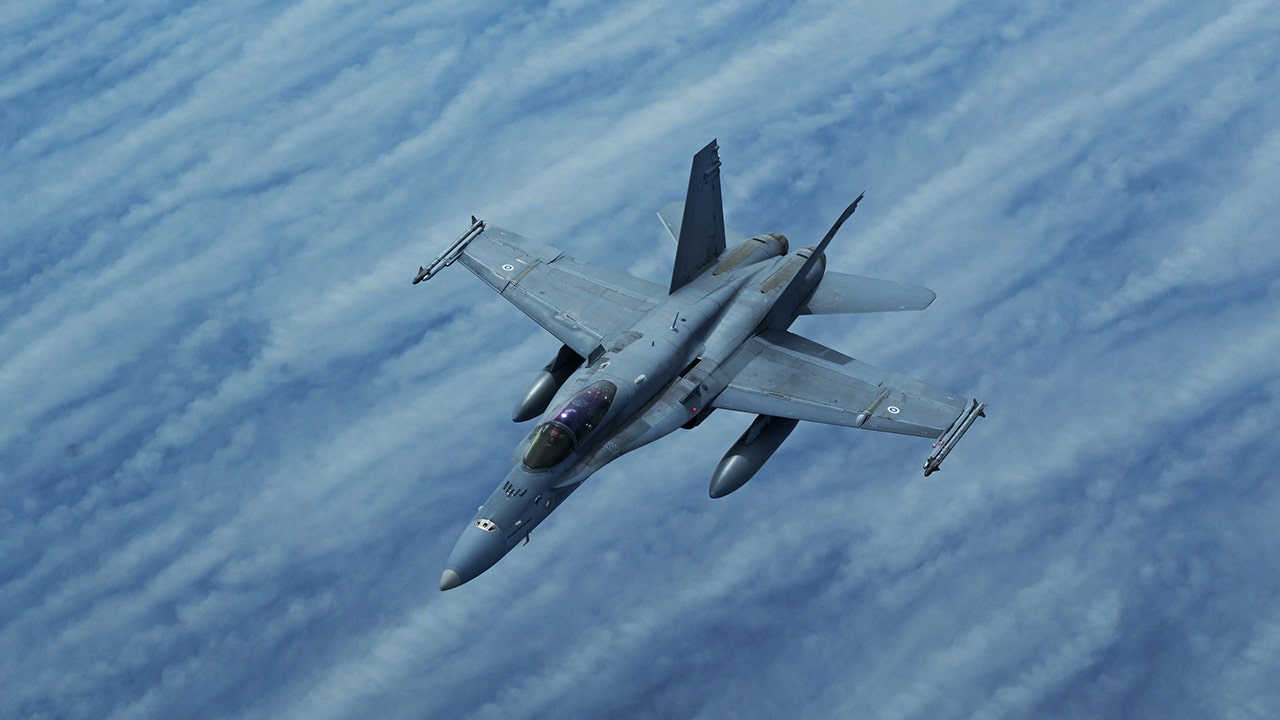World
Hurricane Milton grows ‘explosively’ stronger with 175-mph winds: Live updates

Florida residents prepare for Hurricane Milton
Florida Governor Ron DeSantis has issued a state of emergency for 54 counties as Hurricane Milton approaches.
Hurricane Milton strengthened to a Category 5 powerhouse Monday, driving sustained winds of 175 mph as it rolled across the Gulf of Mexico bound for what could be a devastating crash along Florida’s already storm-battered western coast Wednesday.
“Milton explosively intensifies with 175-mph winds,” the National Hurricane Center said in its 2 p.m. ET advisory, urging Florida residents to heed the advice of local officials.
The storm, now about 700 miles from the state, rapidly strengthened from Category 2 to 5 in just a few hours Monday. By Tuesday, Milton’s intensity “should be dictated by any eyewall replacement cycles, which will likely cause the system to gradually weaken but grow larger,” the NHC said.
The center has issued hurricane watches across portions of Florida and warned that parts of the state could be overwhelmed by life-threatening storm surge, flooding rain and damaging winds.
Milton is forecast to remain an “extremely dangerous” hurricane for the next couple of days. Some weakening is forecast before the hurricane reaches the coast, but Milton “is still likely to be a large and powerful hurricane at landfall in Florida,” hurricane center specialist Jack Beven wrote in an advisory.
Rainfall is expected to total 5-10 inches in some areas of the state that were saturated even before Hurricane Helene smashed ashore less than two weeks ago. Isolated communities could see 15 inches, the hurricane center said. Some areas will be slammed with heavy rainfall well ahead of Milton’s arrival, likely later on Tuesday through Wednesday night, the NHC said. A potentially deadly storm surge of 8-12 feet is possible for Tampa and other coastal communities.
Hurricane Milton tracker: Follow projected path of Category 3 storm expected to hit Florida
Developments:
∎ Milton was centered 700 miles west-southwest of Tampa early afternoon Monday, moving east at 9 mph. The storm’s path had shifted slightly north, placing the center of the cone of uncertainty in the Tampa Bay area.
∎ Tampa International Airport will suspend flight operations at 9 a.m. Tuesday and “reopen when safe to do so.” The airport is not a shelter for people or vehicles, authorities said.
For over a week, Elasa Tiernan has grappled with the flood damage to her home in Crystal Beach. From hundreds of miles off shore, Hurricane Helene inundated Tiernan’s house in 2 feet of seawater. In the immediate aftermath, Tiernan’s husband – now bedridden because of mold exposure – cleared out the furniture and took a sledgehammer to the cabinets and concrete walls. Now, as Hurricane Milton approaches, one question haunts the lifelong Floridian: Will her home survive?
“I was going to squeegee more water out today, but with this all coming again, we pretty much just had to throw in the towel,” Tiernan, 48, told USA TODAY by phone as she searched for gasoline.
Most of her neighbors suffered the same fate during Helene, and now the streets are lined with “mountains of furniture.” On Monday, she bolted the doors shut, turned off the main breaker and headed for her aunt’s house in Tarpon Springs, where she plans to shelter with her husband and daughter.
“I’m going to make sure we have everything we need. I’m a survivalist, I guess,” she said. “Being a mom of a 14-year-old, you don’t really have a lot of time to think otherwise, right?”
Hurricane Milton is the second Category 5 storm of the 2024 Atlantic hurricane season, joining Beryl. Category 5 is the highest rating a hurricane can attain, according to the National Hurricane Center. Maximum sustained winds in excess of 156 mph or higher on the Saffir-Simpson Hurricane Wind Scale are required for a hurricane to reach this intensity.
They are the rarest of hurricanes: Weather.com meteorologist Jonathan Erdman said there have only been 40 such hurricanes in the Atlantic Basin since 1924, according to NOAA’s historical database.
Since 1950, only five other years have had at least two Atlantic Category 5 hurricanes, according to Colorado State University hurricane researcher Phil Klotzbach: 1961: Esther, Hattie; 2005: Emily, Katrina, Rita, Wilma; 2007: Dean, Felix; 2017: Irma, Maria; 2019: Dorian, Lorenzo.
Only four hurricanes have ever hit the U.S. at Category 5 strength; the most recent being Hurricane Michael in 2018.
− Doyle Rice
Flights in the U.S. are not yet being affected by Hurricane Milton, but airlines and airports in the storm’s path are preparing for its impact. Carriers including American Airlines, Delta Air Lines, Southwest Airlines and United Airlines have already begun issuing waivers that allow travelers going to or from some Florida airports to change their tickets beginning Monday for no extra charge, even if they purchased a basic economy fare. Customers can check their airline’s website for specific details on travel advisories.
Area airports are open now but say they are monitoring the storm’s path and are prepared to close if necessary. Tampa International Airport said it will suspend operations beginning 9 a.m. Tuesday and will reopen “as soon as it is safe to do so later this week.”
If a flight gets canceled for any reason, customers are entitled to a refund, according to Department of Transportation rules. Travelers should keep an eye on updates from their airline and consider taking advantage of flexible change policies if they don’t have to travel. Read more here.
− Eve Chen, Zach Wichter and Nathan Diller
Debbie Pace and her family waited in line outside a solid waste facility for almost five hours Sunday night before they could drop off some of the debris Hurricane Helene scattered across their lawn in Palm Harbor, just north of Clearwater. The road to the dump was muddy and several cars had to be towed, said Pace, 52. Meanwhile, lines outside gas stations and supermarkets stretched for blocks as people rushed to pick up supplies.
The approach of Hurricane Milton has plunged Gulf Coast residents – many of whom already were mourning homes and even loved ones from Helene’s rage – into a state of emergency, Pace said.
“Maybe five minutes from our home, it looks like a war zone with furniture stacking the streets everywhere,” she said. “We’re still in such a state of recovery.”
While Florida braces for Milton, Western North Carolina is still in heavy cleanup mode from Helene. Nearly 1,000 soldiers from Fort Liberty in North Carolina and Fort Campbell in Kentucky are closely working with FEMA to distribute food, water and other desperately needed items, Pentagon spokesperson Pat Ryder said at a briefing. Soldiers are also helping clear emergency routes.
The National Guard has activated more than 6,100 guardsmen, hundreds of high water vehicles and dozens of helicopters and rescue boats from 18 different states, Ryder said.
− Cybele Mayes-Osterman
David Green was expecting to meet Monday with an electrician for a damage estimate on his home, which Hurricane Helene flooded with 3.5 feet of water. Now, for the second time in less than two weeks, he’s again fortifying his home – this time for Hurricane Milton. Green and his wife live on St. Pete Beach, which along with Tampa Bay and surrounding coastal communities, is expected to receive 10-12 feet of storm surge this week.
“We’re just exhausted,” he told USA TODAY.
Green said mounds of debris are still piled up on curbs and buildings are being dug out from under the sand Helene pushed on shore. The 62-year-old said while he’s resigned himself to more flooding, he is worried Milton’s powerful winds could turn the household items into projectiles and cause structural damage.
Early Monday, he rented a truck from Home Depot and packed it with plywood to cover his windows. He plans to wrap up work on the home by Monday night, pack up his fans and dehumidifiers and wait out the storm at his daughter’s home in Ruskin. In the meantime, he’s going to postpone his appointment with his flood insurance company.
“Everything is already gone and out of the house,” he said. “We just have to shut the power off. Then we wait and see … hopefully we can come back.”
Milton grew very strong very fast Monday in what meteorologists call “rapid intensification,” which is a dramatic rise in wind speed and a huge drop in barometric pressure in a short amount of time. The phenomenon, which appears to be more common with hurricanes in the Gulf of Mexico in recent years, is typically defined to be a tropical cyclone (whether a tropical storm or hurricane) intensifying by at least 35 mph in a 24-hour period.
Milton more than qualified, exploding from a 60-mph tropical storm Sunday morning to a potent 155-mph Category 4 hurricane − an increase of 95 mph in little more than 24 hours.
Rapid intensification is most likely when a tropical storm or hurricane encounters an “extremely conducive environment,” Colorado State University hurricane researcher Phil Klotzbach says. That typically means very warm water, low vertical wind shear and high levels of midlevel moisture.
− Dinah Voyles Pulver and Doyle Rice

Tips for texting, calling after a major storm
Phone lines can be busy in the aftermath of a big storm. Here are some tips on how to communicate with your loved ones.
Problem Solved
Walt Disney World theme parks were still open to the public Monday. Disney, however, was not taking park reservations for Tuesday and Wednesday. Disney had posted a hurricane update on its Disney World weather updates and information page: “Walt Disney World Resort is currently operating under normal conditions. We are closely monitoring the path of the projected storm as we continue to prioritize the safety of our guests and cast members. To ensure you have a magical visit to Walt Disney World Resort, we encourage you to prepare for the local climate and check the weather forecast for Central Florida. Check back for important weather updates.”
− Jennifer Sangalang
Pinellas, Manatee and Sarasota were among counties expected to announce evacuation orders Monday. Pinellas County, which includes the city of St. Petersburg, was planning to announce mandatory evacuations for 500,000 people in the low-lying areas, Sheriff Bob Gualtieri said Sunday. He urged people to heed evacuation orders after he said too many ignored them for Helene, resulting in 12 deaths in the county and 1,500 emergency calls that went unanswered.
The county already ordered the evacuation of six hospitals, 25 nursing homes and 44 assisted living facilities totaling 6,600 patients, said Cathie Perkins, director of the county’s emergency management. School was canceled through Wednesday.
Kevin Guthrie, director of Florida’s emergency management division, said the state was preparing for the largest evacuation since Hurricane Irma in 2017, when more than 6 million Floridians were forced to flee their homes.
From rescue to recovery: The grim task in flood-ravaged western North Carolina
Gov. Ron DeSantis has declared a state of emergency for 51 of Florida’s 67 counties ahead of Milton. Declaring a state of emergency allows the state and local governments more freedom to coordinate emergency agencies and relax restrictions.
The governor may suspend regulations that would slow emergency response, commandeer private property needed to deal with the emergency, order evacuations and direct or delegate control of the National Guard to help rescue or cleanup operations. DeSantis also could suspend the sale of alcohol, guns, explosives and combustibles, establish emergency housing, limit power services as needed, and impose or allow exceptions to curfews. Read more here.
− C. A. Bridges, USA TODAY NETWORK – Florida
Contributing: Reuters










